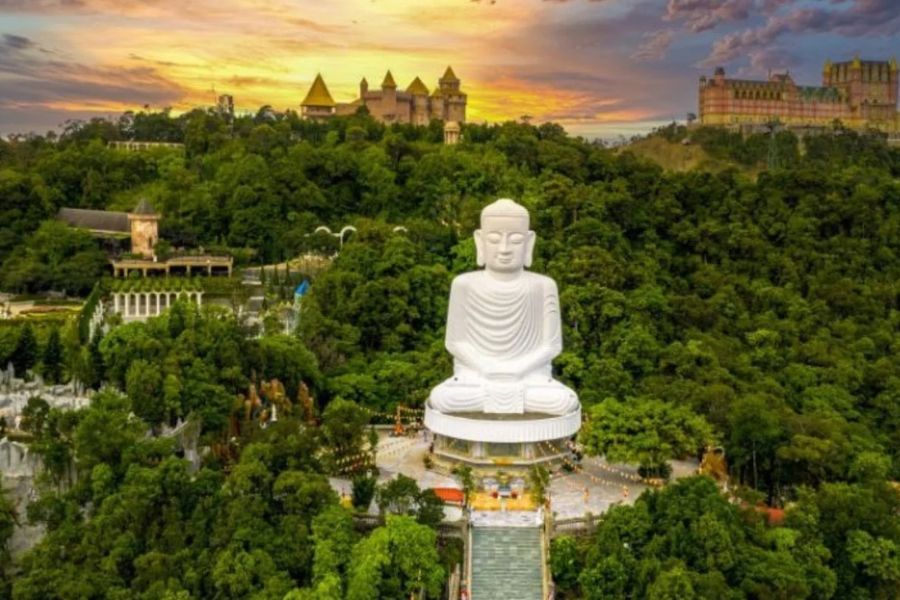The Best Time To Visit Da Nang For A Wonderful Adventure
The best time to visit Da Nang is March to May and September to early October, which is pleasant weather and less rainfall. If you love visiting here, read Seni World’s guide to know about the weather and travel tips.
Table of Contents
ToggleWhere Is Da Nang
Da Nang is a coastal city in Central Vietnam, situated between the capital Hanoi to the North and Ho Chi Minh City to the South. Da Nang lies along the East Sea and is bordered by wonderful beaches, such as My Khe Beach and Non Nuoc Beach, as well as scenic mountains, consisting of the Marble Mountains (or Ngu Hanh Son) and the Ba Na Hills.
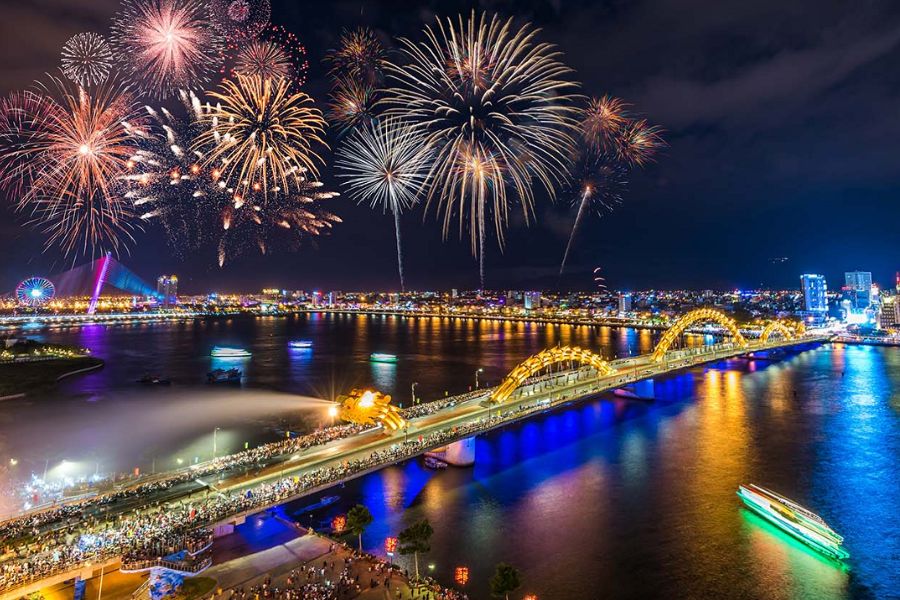
Da Nang’s strategic location makes this city a handy gateway to UNESCO World Heritage Sites like Hoi An Ancient Town, the Imperial City of Hue, or My Son Sanctuary. Therefore, a Da Nang itinerary is one of the most well-known selections for travelers to have an energetic destination for both proud culture and beautiful nature in Vietnam.
What Is The Best Time To Visit Da Nang?
The best time to visit Da Nang is the Spring (from March to May) and the early half of the Autumn (from September to early October). These times have good weather with pleasantly warm temperatures, skies are clear, and less severe rainfall than the top of the wet season. You can enjoy outdoor activities, visit famous attractions, and it is perfect for natural sightseeing.
March to May (Spring): This is the best time to visit Da Nang, when the weather is pleasantly warm, skies are clear, and rainfall is minimal. This time, the average Da Nang temperature is from 23°C to 30°C, which is perfect for sightseeing, enjoyable at well-known beaches like My Khe Beach and Non Nuoc Beach, or uncovering Marble Mountains and Ba Na Hills. The ocean is calm, and the humidity is decreasing compared to the Summer, so taking part in outdoor activities is comfortable without severe heat.

September to early October (the early half of the Autumn): This is another best time to go to Danang, when the peak traveller crowds have left, accommodation rates drop, and the weather stays warm with less severe rainfall than the top of the wet season. Even as Da Nang still has occasional showers this time, they may be normally quick-lived, and you can freely revel in both the city’s cultural landmarks and its natural scenery without an excessive amount of disruption.
Da Nang Weather Overview By Season
Da Nang has four seasons in a year. The weather changes from pleasant to hot and humid, then mild and dry, depending on the real-time you arrive here. Seni World has collected the Da Nang weather by month and highlighted some things to do in Da Nang for you to easily follow and schedule a suitable trip:
| Season | Months | Temperature (°C) | Typical Weather Experience |
| Spring | March – May | 22 – 30 | The Da Nang temperature is pleasant with low rainfall and blooming flowers. So it is the best time for sightseeing. |
| Summer | June – August | 25 – 34 | Summer is hot and sunny, wonderful for various beach activities, though this time, occasional heavy rains can occur. |
| Autumn | September – November | 23 – 31 | The climate is cooler than in summer. Autumn is the rainy season with frequent showers and possible typhoons. |
| Winter | December – February | 18 – 24 | It is dry and mild, especially, cooler evenings, as well as calm seas. The weather is perfect for relaxed travel. |
Spring (From March To May)
Spring in Da Nang is one of the most pleasant climates of the 12 months, with temperatures ranging from 22°C to 30°C. Humidity is moderate, and the skies of Da Nang are usually clear, making it a perfect time for outdoor activities. The city is full of blooming plants and green scenery, especially across the Han River (Song Han). Some world-famous attractions like Marble Mountains or Ba Na Hills are particularly scenic throughout this season.

Vacationers travelling in Da Nang in Spring can enjoy a mixture of cultural and recreational activities without the extreme heat or heavy rains. That is additionally the season for many unique local festivals, consisting of the Da Nang International Fireworks Festival (commonly from late April to early May). It adds a brilliant cultural touch to travelers’ experience, especially global travelers. Lodging costs this season are moderate in comparison to peak summer. You can enjoy a fantastic balance between convenience and cost.
Summer (From June To August)
The summer season in Da Nang is warm to hot, with temperatures regularly ranging from 25°C to 34°C. Summer is the peak season for seashore lovers, because the waters along Non Nuoc Beach, My Khe Beach, and Son Tra Peninsula are warm and clear, which is great for swimming, surfing, and diving. The days of summer in Da Nang are long, so tourists can comfortably enjoy more vibrant sightseeing and exciting outdoor adventures than in other seasons.
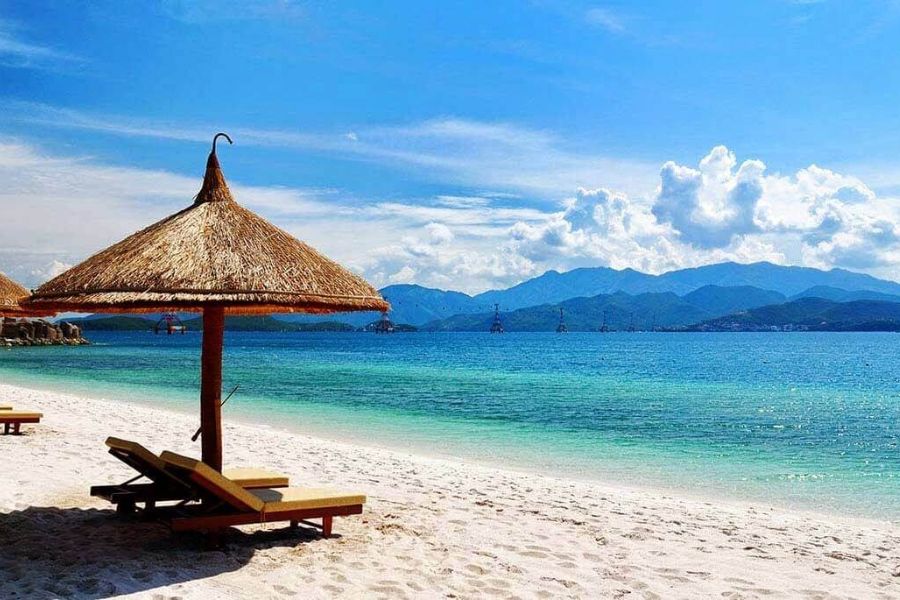
However, beneath the sun, the UV levels increase, so you should prepare suitable sun items and clothing to protect your skin. Occasional afternoon showers can also arise, which is called the beginning of the Da Nang rainy season, but they are usually quick-lived, bringing a refreshing splash from the heat. The Summer in Da Nang is the busiest tour season, so the rates of accommodations and transportation can be higher, as well as more crowded attractions.
Autumn (From September To November)
Autumn has a great shift in the Da Nang weather, with temperatures dropping to around 23°C to 31°C. Although early September can still make travelers experience things like Summer, October and November will be highlighted by the rainy season. Heavy showers or even typhoons can occur, sometimes affecting your journey plans, particularly outdoor explorations. Despite the unpredictable climate, these months offer lush and green scenery thanks to the rainfall.
If you do not mind a bit of rain, Autumn is an exquisite time for captivating photography, because the landscapes seem fresh and brilliant. Tourists need to keep an eye on weather forecasts and arrange more indoor journeys, including going to museums, trying local delicacies in a famous local restaurant, or enjoying spa treatments. Because of these reasons above, prices of hotels and transportation are typically lower in comparison to the Summer season.
Winter (From December To February)
Winter in Da Nang is mild and comparatively dry, with temperatures ranging from 18°C to 24°C. The cooler air of this season makes it cozy for strolling excursions, mountain hikes, and investigating the city without sweating. The ocean can be cooler than in the Summer season, but it is perfect for you to unwind on beach walks and take photos with beautiful coastal surroundings, which is one of the impressive parts of this coastal Central Vietnam itinerary.
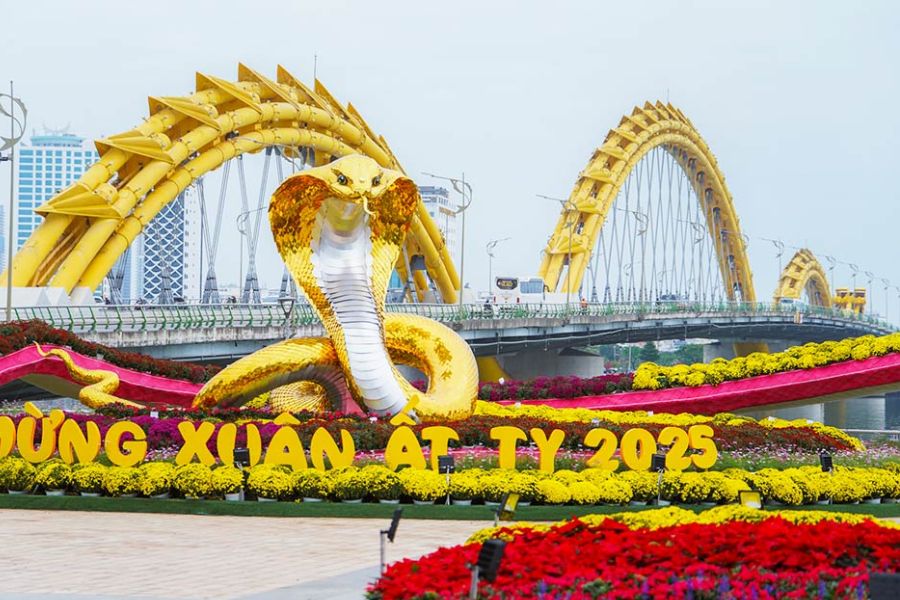
This season is a good selection for travelers who seek a peaceful and relaxed adventure, as there are fewer tourists. However, you need to consider the lunar month of Vietnam, because the Lunar New Year (or Tet Holiday) normally falls in January or February. This is an attractive time to go due to many cultural festivities, but some tour agencies or operators close during the vacation. Overall, winter in Da Nang is a top-notch option for cultural vacationers and people who prefer mild and calm weather.
Tips For Visiting Da Nang In Different Seasons
To have a convenient, exciting, safe, and memorable trip to Da Nang, not only the best time to visit Da Nang, but you also need to remember the following essential travel tips. These tips will help you discover this attraction comfortably and protect yourself best:
- Book hotels in the Spring and the Summer in advance: As they are the most popular periods for tours in Da Nang, so crowded and have a higher price at lodgings and transportation. Therefore, you need to book in advance to have the suitable option.
- Wear mild jackets in Spring: Particularly in cool mornings and evenings in February, you should wear one more mild jacket to keep your body warm.
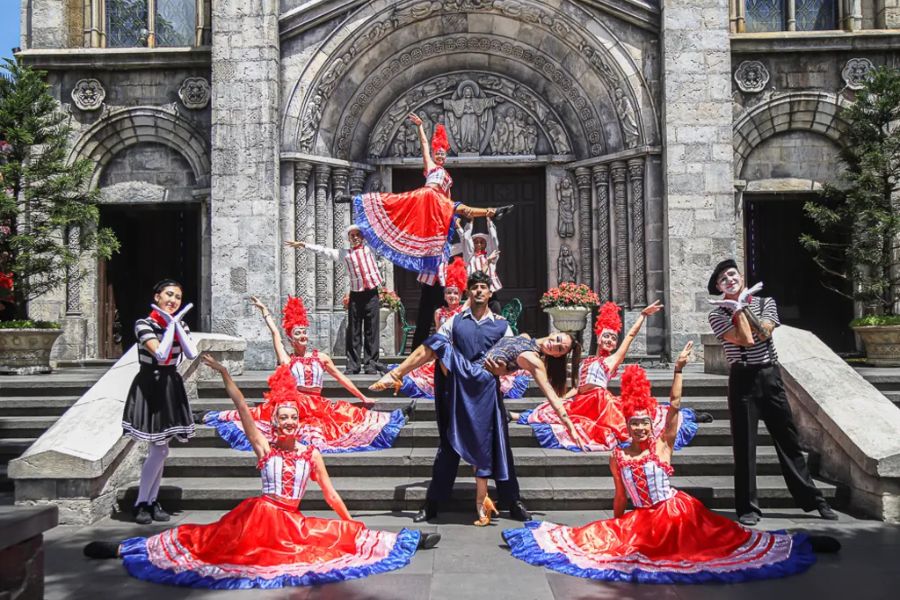
- Protect your skin in the Summer: Don’t forget to prepare sunscreen with high SPF for the extreme heat under the sun. Also, stay hydrated by carrying a bottle of water while sightseeing.
- Avoid the midday heat in the Summer: You should visit outdoor attractions before the midday heat. Moreover, let’s wear light and breathable apparel to ensure your body feels comfortable in the sun.
- Arrange suitable items in the Autumn: You need to convey a light raincoat or a small umbrella for quick afternoon showers in Autumn.
- Schedule flexibly in the Autumn and the Winter: These times have more rainfall, so you need to flexibly arrange your travel plan, such as adding more indoor destinations instead of outdoor attractions. For more consultation on arranging a travel plan, let’s contact Seni World.
- Say no to beach vacations in the Winter: During this time, the sea can be tough and unsafe for swimming, so you should just stroll on the sand and avoid water activities.
FAQs About The Best Time To Visit Da Nang
Seni World also has some FAQs to help you understand deeply about the best time to visit Da Nang. Let’s see them more below!
Q1: What is the best time to visit Ba Na Hills?
Let’s visit this attraction from February to May and from September to October, because of the pleasant weather with fewer crowds.
Q2: What is the best time for hiking in the Marble Mountains?
If you want to hike in the Marble Mountains, don’t miss out on the cooler months from February to April.
Q3: When can I see the most beautiful sunsets in Da Nang?
To see the most beautiful sunsets in Da Nang, you can arrive here from April to September, when the sky is usually clearer for captivating coastal sunsets.
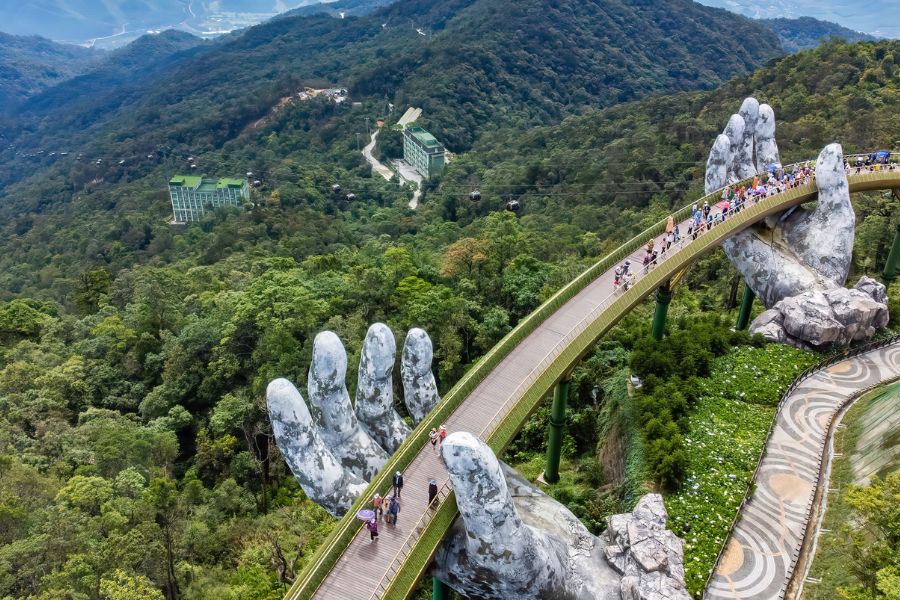
Q4: What is the best time for photography in Da Nang?
From February to May, Da Nang has brilliant blue skies, clear water, and lush greenery. So this is perfect for photography in this city.
Q5: What is the best time for diving or snorkeling in Da Nang?
To have a great experience of diving or snorkeling, let’s revel in this activity from May to August, which is the best time for water clarity.
Q6: Can I visit Da Nang year-round?
Of course, you can have many different experiences that vary depending on the season, such as the dry season is best for outdoor activities, while the rainy season is quieter and has cheaper prices.
Q7: How far in advance should I book lodgings for Da Nang’s peak travel season?
You should book accommodations at least 2 to 3 months ahead for the best deals if you want to travel during Da Nang’s peak travel season.
Final Thoughts: Is Da Nang Worth Visiting?
The best time to visit Da Nang is the Spring (from March to May) and the early half of the Autumn (from September to early October), which have good weather with pleasantly warm temperatures, skies are clear, and less severe rainfall than the top of the wet season. If you want to learn more about Da Nang, as well as consult travel tips, and receive support for the visa process, let’s contact Seni World. We are here to help you from A to Z on your Da Nang discovery journey.










